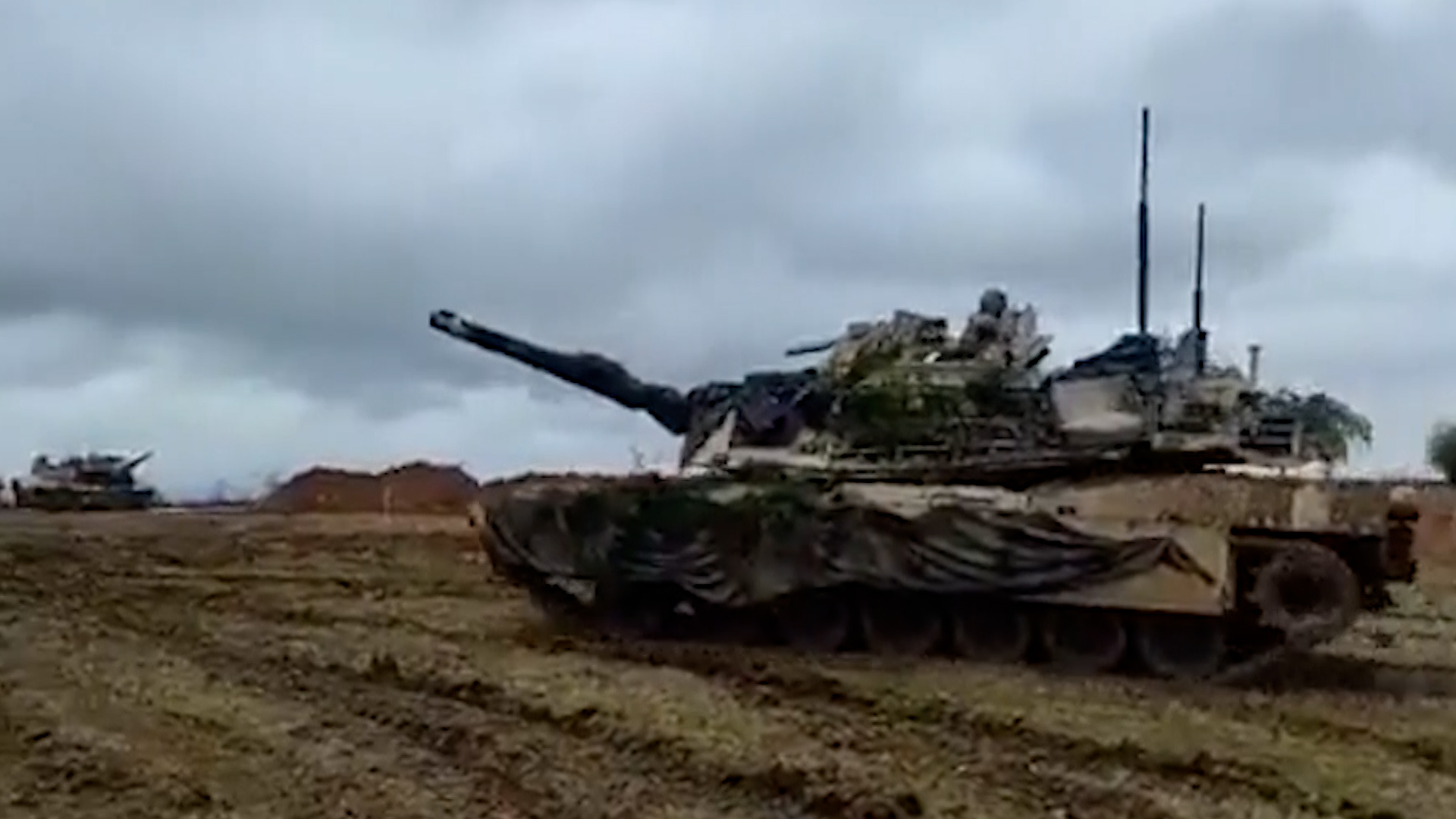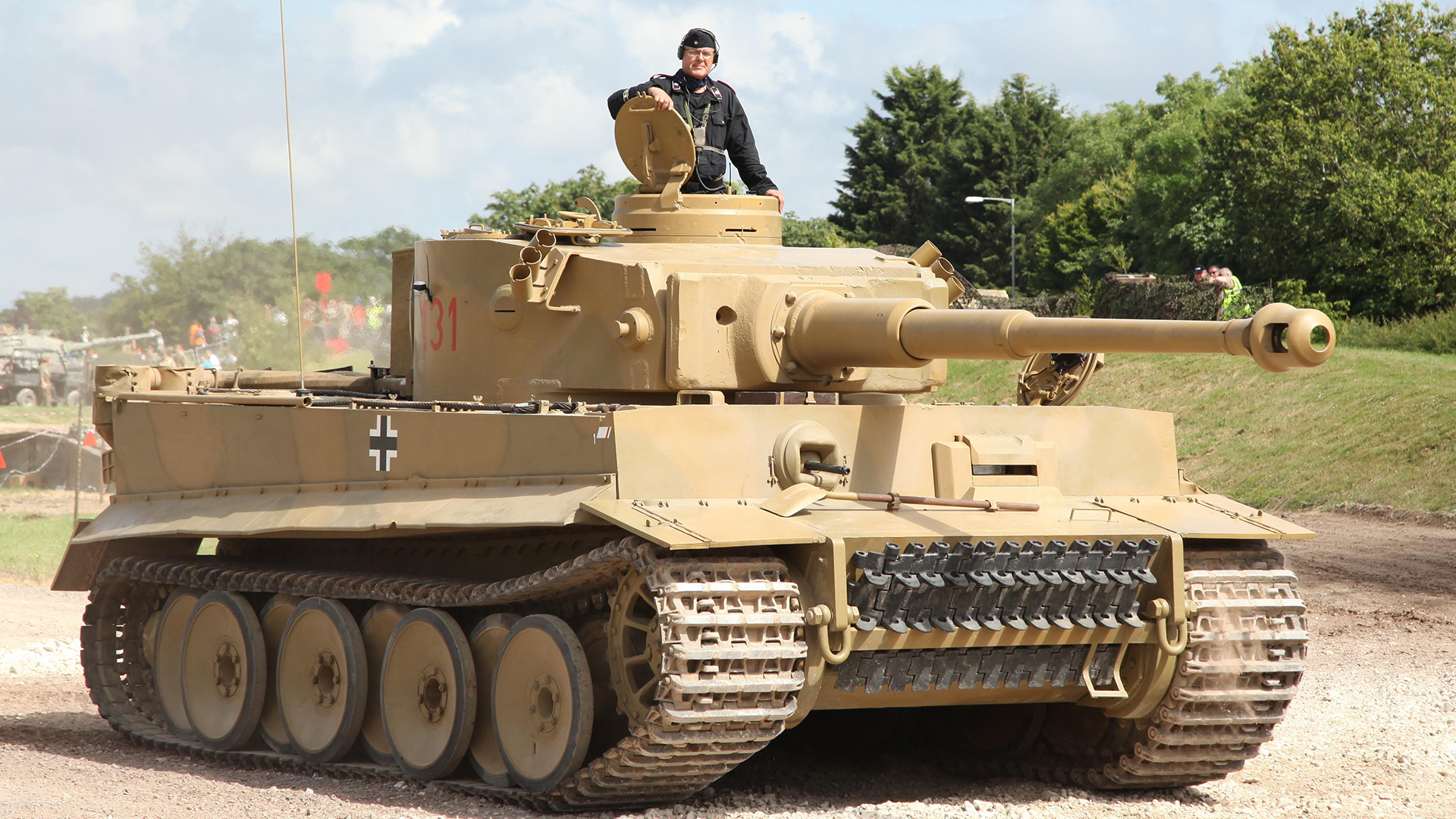The right tanks in the wrong war: Do Leopards deserve their poor reputation?
German-supplied armour and equipment is underperforming in Ukraine, according to leaked comments by a German defence official.
The deputy defence attaché to Ukraine made the remarks on a visit to a German army training centre in Saxony, where he gave feedback from the frontline on how German kit is performing.
And at first glance they're pretty damning verdicts.
He said the Leopard 1 tank is being used as makeshift artillery due to its weak armour instead of its intended role as a main battle tank.
The Panzerhaubitze 2000 (PzH 2000) self-propelled gun suffers from frequent barrel overheating and electronic failures, so much so that its suitability for war is strongly questioned.
And while Germany's IRIS-T air defence system is highly effective, he said the missiles are costly and in short supply.

A transcript of his comments was leaked and later published jointly by three of Germany's largest media outlets.
The story has caused a stir, but what does it tell us? And are German vehicles and equipment really that poor?
Well, firstly German kit is far from being the worst-performing in Ukraine. That honour goes to Russia's Soviet-era turret-tossing tanks with their exploding auto-loaders.
But the story has generated debate on how well exquisite Western weapons cope in the intensity of a complex, grinding battle like Ukraine.

The Leopard 1
Let's take the Leopard 1 and Leopard 2 tanks as an example.
According to figures on the German Federal Government website, Berlin has given Kyiv 103 Leopard 1 A5s and 18 Leopard 2 A6s, with another 22 of the more advanced 2 model in the pipeline.
Now the Leopard 1 A5 is a Cold War tank from the mid-1980s. On the plus side, it's light, weighing around 40 tonnes compared with 64 tonnes for the Challenger 2.
As a tank, it offers good protection from mines and artillery, and the firing system for the 105mm main gun on the upgraded A5 model is the same as on the Leopard 2.
But it is relatively light on armour, and that makes it vulnerable to capable anti-tank weapons like Russia's Kornet as well as more powerful drones and loitering munitions like the Lancet.
That appears to be the reason the Ukrainians often dig them in and use them as static artillery.
The Leopard 2
The Leopard 2, on the other hand, has proven to be a deadly weapon, possibly Ukraine's most effective tank, despite being vulnerable to a top-down drone strike.
The problems seem to be less with the tank itself and more with how it is being deployed and operated.
A Green Party politician in Germany recently said he'd visited a repair facility in Lithuania where they fix damaged Leopards, but he found they were short of spare parts.
And he was told untrained Ukrainian troops were trying to fix Leopards in the field, but in doing so were making things worse.
The Leopard 2 is complex to maintain, particularly its sophisticated fire control system and powerful V-12 twin turbo-diesel engine.
It requires specialist technicians and tools, plus the ability to work under constant threat of drone attack, hence they end up in Lithuania or Poland.
German tank crews also take three years to learn how to operate a Leopard 2 properly.
So it's not surprising that so many were lost during Ukraine's unsuccessful counteroffensive in 2023.
They didn't have enough of them, crews didn't have enough training and they didn't use them in the way they were designed.
The Leopard 2 was built for fast, high-intensity battles, not the grinding attrition of Ukraine, where the skies are saturated by drones and electronic warfare.
They were also designed to operate with air support – and Ukraine has very little of that.

Big cat alternatives
So, how does the Leopard 2 compare to other tanks given to Ukraine?
Well, the American M1 Abrams' gas-turbine engine can actually be removed fairly easily. It's held in with 10 bolts and a well-trained crew can apparently do it in less than 20 minutes, but it does need a recovery vehicle.
Britain's Challenger 2 is also complex to operate and maintain, plus, Ukrainian troops complain that it's heavy and sinks in the mud.
It also requires two sets of tools because the turret uses metric measurements and the hull uses Imperial.
It's also worth noting that Ukraine hasn't lost that many Leopards.
According to tracking website Oryx, of the 1,147 tanks Kyiv has lost, 17 Leopard 1s have been destroyed and 38 Leopard 2s.
That's out of a reported 250-odd Leopards supplied by Germany and other countries, so around a fifth of them.
Compare that to Russia, which has lost 3,903 tanks – around 100 a month – since the war began.

Are German tanks too complicated?
So what about the claim that German tanks are just over-engineered? Comparisons are being made between the Leopard and Germany's Second World War tanks.
These include the formidable Tiger 1, which could easily knock out Allied tanks but was unreliable and costly to maintain.
It's a neat comparison, but the Tiger's problems were more to do with a lack of parts, ammunition and fuel than any inherent design flaws, which it did undoubtedly have.
And crucially, the leaked report says many of the weapons Germany has given to Ukraine, like the Marder infantry fighting vehicle and the Gepard anti-aircraft tank, have been very effective indeed.
There have also been reports that the intensity of combat in Ukraine means some systems, like the PzH 2000, have been pushed beyond their design limits.
The PzH was intended to fire up to 100 rounds a day, but in Ukraine, that's regularly being exceeded, increasing wear and tear on the systems.
Germany has established dedicated repair facilities in countries like Lithuania, and both Rheinmetall and KNDS, the makers of the Leopard, have now set up workshops inside Ukraine itself.
While the headlines don't paint a flattering picture of the Leopard 2, it's still among the best tanks in the world.
And critically, it's provided huge survivability for the crews using it.
What the conflict in Ukraine has done is shift the dial, with forces looking increasingly at sustainability, not just firepower.
While this report says "hardly any German heavy equipment is suitable for war", it's a conclusion that many Russian soldiers at the receiving end of a Leopard 2 may well take issue with.









